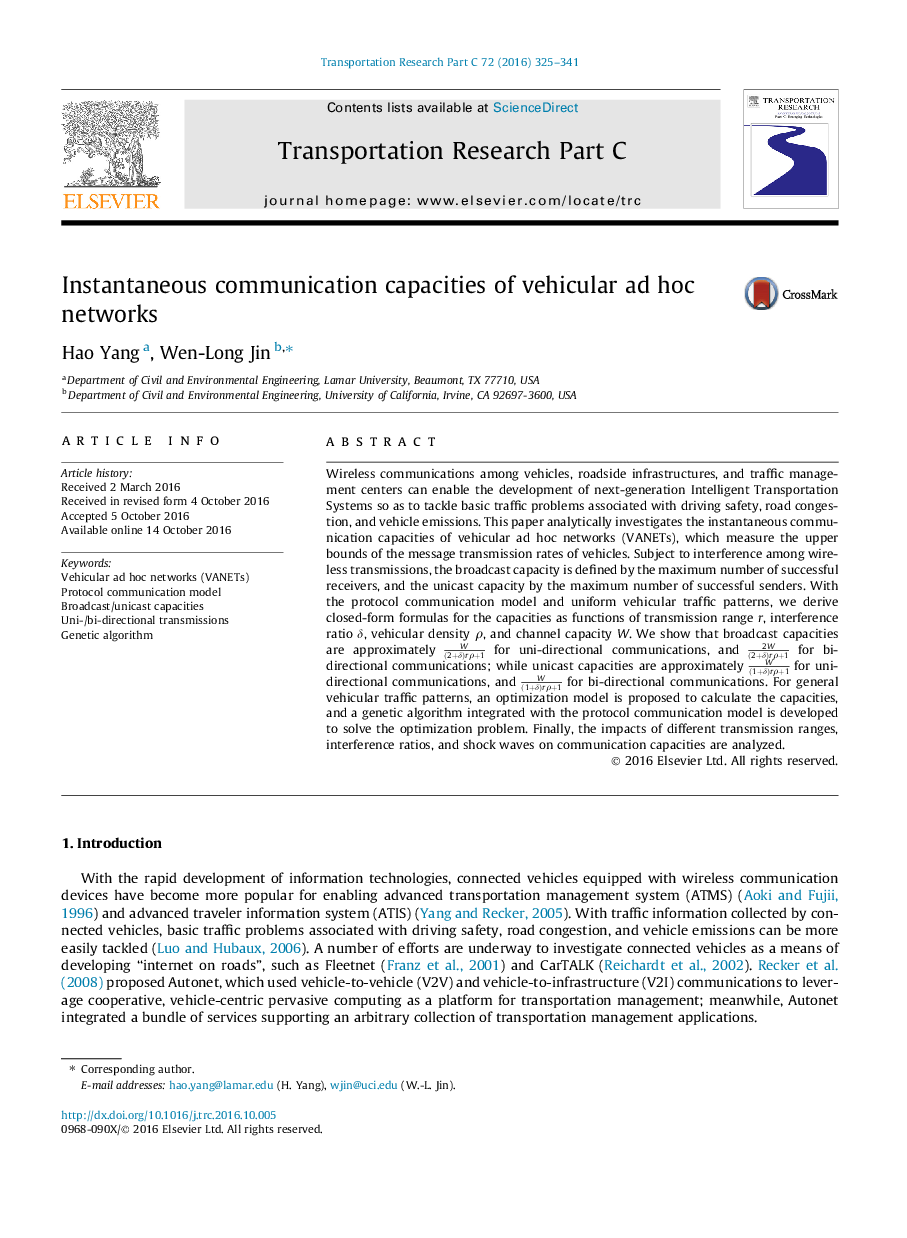| Article ID | Journal | Published Year | Pages | File Type |
|---|---|---|---|---|
| 4968687 | Transportation Research Part C: Emerging Technologies | 2016 | 17 Pages |
Abstract
Wireless communications among vehicles, roadside infrastructures, and traffic management centers can enable the development of next-generation Intelligent Transportation Systems so as to tackle basic traffic problems associated with driving safety, road congestion, and vehicle emissions. This paper analytically investigates the instantaneous communication capacities of vehicular ad hoc networks (VANETs), which measure the upper bounds of the message transmission rates of vehicles. Subject to interference among wireless transmissions, the broadcast capacity is defined by the maximum number of successful receivers, and the unicast capacity by the maximum number of successful senders. With the protocol communication model and uniform vehicular traffic patterns, we derive closed-form formulas for the capacities as functions of transmission range r, interference ratio δ, vehicular density Ï, and channel capacity W. We show that broadcast capacities are approximately W(2+δ)rÏ+1 for uni-directional communications, and 2W(2+δ)rÏ+1 for bi-directional communications; while unicast capacities are approximately W(1+δ)rÏ+1 for uni-directional communications, and W(1+δ)rÏ+1 for bi-directional communications. For general vehicular traffic patterns, an optimization model is proposed to calculate the capacities, and a genetic algorithm integrated with the protocol communication model is developed to solve the optimization problem. Finally, the impacts of different transmission ranges, interference ratios, and shock waves on communication capacities are analyzed.
Related Topics
Physical Sciences and Engineering
Computer Science
Computer Science Applications
Authors
Hao Yang, Wen-Long Jin,
